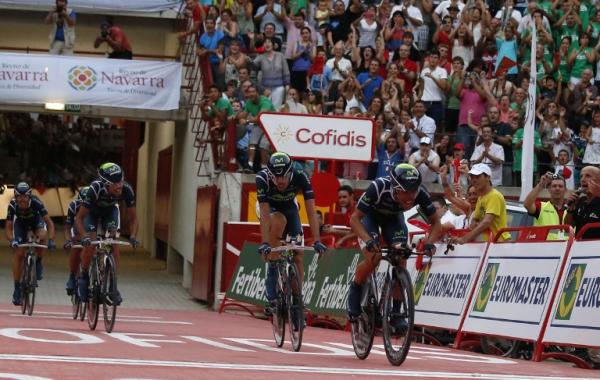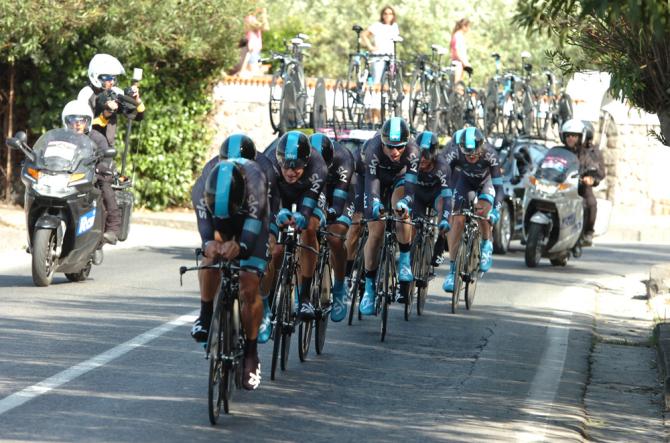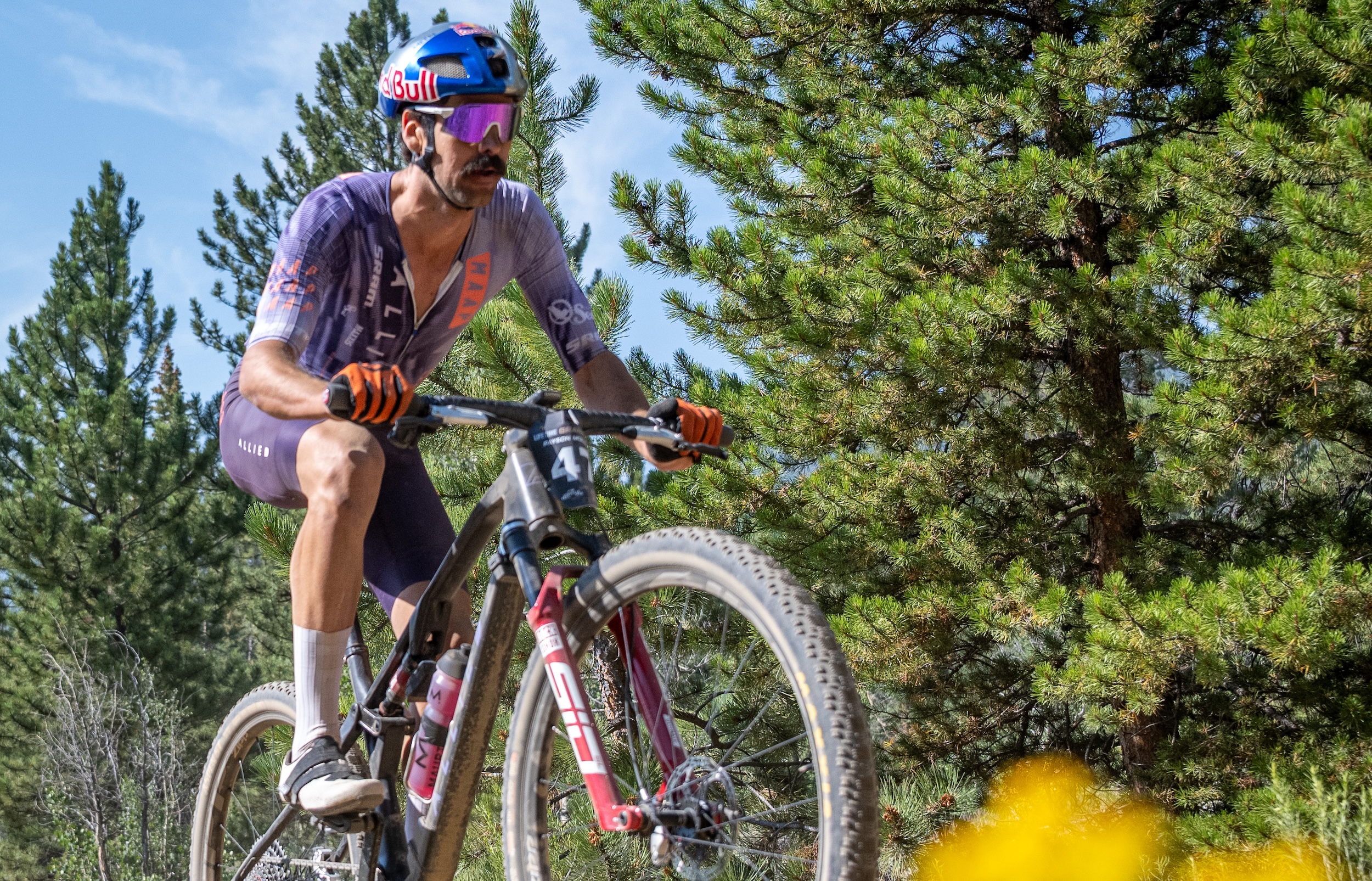Vuelta team time trial a stage of two halves
First section of course highly technical, second part straightforward


For the fourth year running, the Vuelta a España will kick off with a team time trial. And while the 2010 team time trial in Seville was challenging for its ultra-late night-time schedule, 2011‘s in Benidorm had a long climb and some tricky corners (which wreaked havoc amongst Team Sky and cost both Bradley Wiggins and Chris Froome significant amounts of time), and 2012 was remarkable for the temperatures of nearly 40 degrees, the Vuelta 2013 opening test’s most memorable feature – at least initially – is that it starts not on land, but on water.
Galicia’s bateas – giant rafts with underwater cages used for growing seafood, particularly mussels – are dotted across the water in the region’s numerous sea inlets like giant black insects, and are one of this region’s best-known features. And in a nod towards the importance of the seafood industry and how closely it is identified with Galicia, the Vuelta organisers have decided to use a batea for their start.
Fortunately, this isn’t some wobbly little craft that will see the riders get seasick or their bikes topple into the brine at the first gust of wind. Normally bateas are around 20 metres long, ample space for nine riders to line up for the Vuelta’s first day of racing. An unusual start, and the first ever for a Grand Tour on water.
Once the riders hit solid ground in the tiny town of Vilanova de Arousa, though, the first segment of the 27.4 kilometre team time trial is anything but straightforward. For the next ten kilometres, as far as the village of Cambados (where fans may recall last year’s very technical individual team time trial of the Vuelta started) the race dives and ducks along backroads where there is barely a single section of straightaway.
As the route dips and curves past fields of tall maize plants (another typical feature of Galicia), small-holdings, solid-looking bungalows, tiny bars with chalked up signs outside for fresh seafood (no surprise there) and high stone walls, the road surface is broad and well-tarmacked. There is nothing like a classified climb, with a grand total of 285 metres of vertical climbing not likely to cause too many problems for any ‘flat-earthers’ in the Vuelta peloton.
But should anybody puncture, on such a tricky course he is going to find it extremely difficult to regain contact – both because it is so technical and with so many bends, it may be hard, in any case, for teams to keep a single solid line going steady throughout the course.
There are other factors, too, like the wind – which in this part of Galicia and on a course mainly run just a few kilometres inland from the Atlantic, is pretty much a constant, and could catch teams out with so many changes of road direction. The weather fortunately, is warm and dry, with the day’s maximum temperature forecast to be 27 degrees, nowhere near the scalding temperatures the Vuelta experienced in Pamplona and indeed in for the entire first week of racing last year.
The latest race content, interviews, features, reviews and expert buying guides, direct to your inbox!
The second half of the course, after Cambados and all the way through to the finish at Sanxenso, changes radically. As soon as the riders swing left onto a main road, the course is far straighter, with only a few roundabouts, gentle climbs and fast, sweeping descents as the main challenges.
After one marginally more difficult section on the small hill and chunks of woodland above the tourist resort of Sanxenxo, the course drops fast into the seaside town for a final run-in over a small climb and via a couple of tricky corners along the seafront. Rather than a finale on another batea though, the route will finish on a seafront road jammed between a beach full of holidaymakers and the usual mixture of bucket-and-spade shops, ice-cream stands and cafes that go with any resort.
Assuming teams come through the first technical section unscathed, the most important element of this TTT is its length: at 27.4 kilometres, it is much longer than the opening tests of the Vuelta in 2012 (16.5 kilometres), 2011 (13.5 kilometres) or 2010 (13 kilometres).
In a race with eleven summit finishes there will be plenty of opportunities for climbers to get time back: but if a team has a bad day or loses riders early on to punctures or technical problems, at least one overall contender could be on the back foot from the word go.
Alasdair Fotheringham has been reporting on cycling since 1991. He has covered every Tour de France since 1992 bar one, as well as numerous other bike races of all shapes and sizes, ranging from the Olympic Games in 2008 to the now sadly defunct Subida a Urkiola hill climb in Spain. As well as working for Cyclingnews, he has also written for The Independent, The Guardian, ProCycling, The Express and Reuters.

